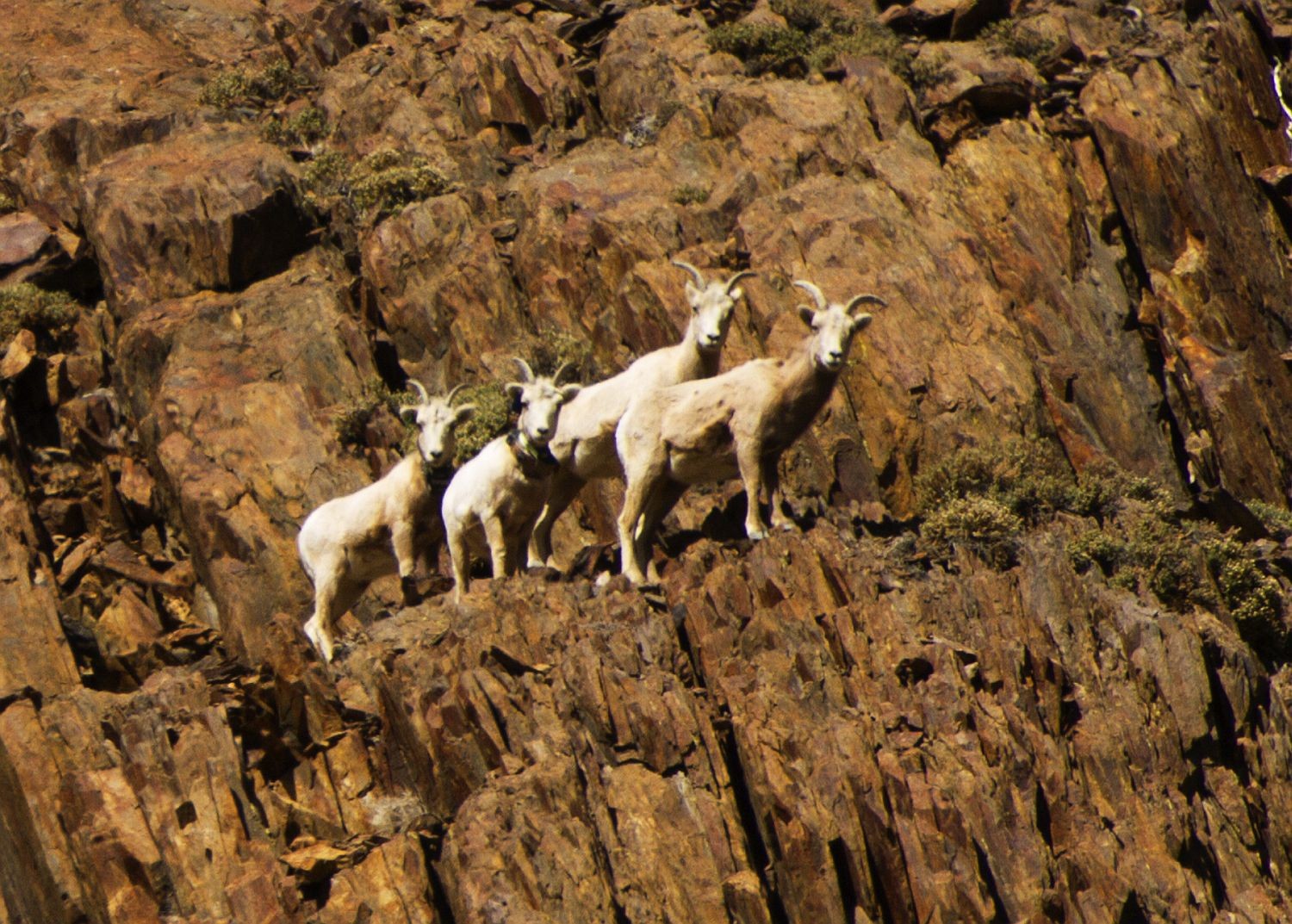Bighorn sheep
A species of Sheep, Also known as Rocky mountain bighorn sheep, California bighorn sheep Scientific name : Ovis canadensis Genus : Sheep
Bighorn sheep, A species of Sheep
Also known as:
Rocky mountain bighorn sheep, California bighorn sheep
Scientific name: Ovis canadensis
Genus: Sheep
Content
Description General Info
 Photo By California Department of Fish and Wildlife , used under CC-BY-2.0 /Cropped and compressed from original
Photo By California Department of Fish and Wildlife , used under CC-BY-2.0 /Cropped and compressed from original Description
Bighorn sheep are named for the large, curved horns borne by the rams (males). Ewes (females) also have horns, but they are shorter with less curvature. They range in color from light brown to grayish or dark, chocolate brown, with a white rump and lining on the backs of all four legs. Males typically weigh 58–143 kg (128–315 lb), are 90–105 cm (35–41 in) tall at the shoulder, and 1.6–1.85 m (63–73 in) long from the nose to the tail. Females are typically 34–91 kg (75–201 lb), 75–90 cm (30–35 in) tall, and 1.28–1.58 m (50–62 in) long. Male bighorn sheep have large horn cores, enlarged cornual and frontal sinuses, and internal bony septa. These adaptations serve to protect the brain by absorbing the impact of clashes. Bighorn sheep have preorbital glands on the anterior corner of each eye, inguinal glands in the groin, and pedal glands on each foot. Secretions from these glands may support dominance behaviors. Bighorns from the Rocky Mountains are relatively large, with males that occasionally exceed 230 kg (500 lb) and females that exceed 90 kg (200 lb). In contrast, Sierra Nevada bighorn males weigh up to only 90 kg (200 lb) and females to 60 kg (140 lb). Males' horns can weigh up to 14 kg (30 lb), as much as the rest of the bones in the male's body. 
General Info
Lifespan
10-20 years
Diet
Bighorn sheep's diet predominantly consists of grasses, shrubs and herbs. Their preference for sedges and forbs intensifies in spring and summer, but during winter, they rely on dwarf shrubs and lichen for sustenance.
Appearance
Bighorn sheep is a large mammal with a stocky build. Its thick coat is primarily brown, lightening to white on the rump, muzzle, and belly. Notably, it bears impressive double-curled horns, larger and heftier in males. Females have slender, more pointed horns. As the animal ages, its horns develop visible grooves marking annual growth.
Behavior
Bighorn sheep are generally gregarious, living in large flocks. Males exhibit competitive behavior, notably dramatic head-butting contests, for dominance and mating rights. They forage during dawn and dusk, grazing on grasses, sedges, and shrubs. Bighorn sheep show impressive climbing abilities, beneficial to their rugged, mountainous habitats.
Population
Stable

 Photo By California Department of Fish and Wildlife , used under CC-BY-2.0 /Cropped and compressed from original
Photo By California Department of Fish and Wildlife , used under CC-BY-2.0 /Cropped and compressed from original